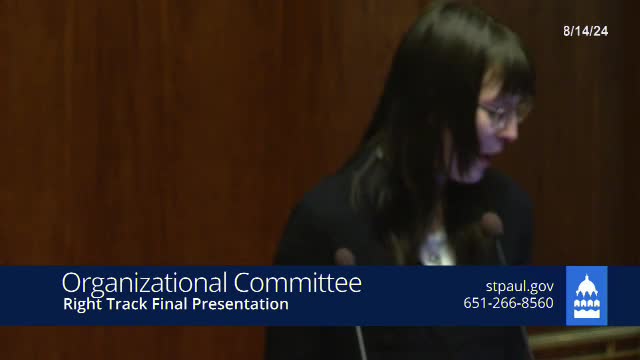Opioid crisis demands urgent action for accessible treatment
August 14, 2024 | St. Paul City, Ramsey County, Minnesota
This article was created by AI summarizing key points discussed. AI makes mistakes, so for full details and context, please refer to the video of the full meeting. Please report any errors so we can fix them. Report an error »

In a recent government meeting, Leah presented a comprehensive overview of the opioid crisis in Minnesota, highlighting a significant decline in opioid-related deaths in Ramsey County. Data indicates a drop from 53 deaths in the second quarter of 2023 to 26 in the first quarter of 2024, attributed to increased funding for opioid-related initiatives. However, the presentation underscored the alarming prevalence of fentanyl, which is involved in 90% to 95% of opioid deaths and accounts for 62% of overdoses in the state.
Leah emphasized the need for long-term solutions, such as buprenorphine and methadone, which are effective in treating opioid use disorder (OUD). Despite their efficacy, access to these treatments remains limited, particularly in St. Paul, where there are only nine methadone clinics compared to 15 in Minneapolis. The presentation also revealed that only one in ten individuals with substance use disorders receive treatment in the U.S., highlighting a critical gap in care.
The discussion included a call to action for increased accessibility to treatment programs, advocating for more Narcan training initiatives and funding for outpatient services. Leah pointed out that while short-term solutions like Narcan and safe use sites are vital for preventing deaths, they do not address the root causes of addiction.
Council members echoed Leah's concerns, stressing the urgency of addressing the opioid crisis and the challenges surrounding treatment access. The meeting concluded with a commitment to explore more effective strategies to combat the epidemic and improve public safety in community spaces.
Leah emphasized the need for long-term solutions, such as buprenorphine and methadone, which are effective in treating opioid use disorder (OUD). Despite their efficacy, access to these treatments remains limited, particularly in St. Paul, where there are only nine methadone clinics compared to 15 in Minneapolis. The presentation also revealed that only one in ten individuals with substance use disorders receive treatment in the U.S., highlighting a critical gap in care.
The discussion included a call to action for increased accessibility to treatment programs, advocating for more Narcan training initiatives and funding for outpatient services. Leah pointed out that while short-term solutions like Narcan and safe use sites are vital for preventing deaths, they do not address the root causes of addiction.
Council members echoed Leah's concerns, stressing the urgency of addressing the opioid crisis and the challenges surrounding treatment access. The meeting concluded with a commitment to explore more effective strategies to combat the epidemic and improve public safety in community spaces.
View full meeting
This article is based on a recent meeting—watch the full video and explore the complete transcript for deeper insights into the discussion.
View full meeting
